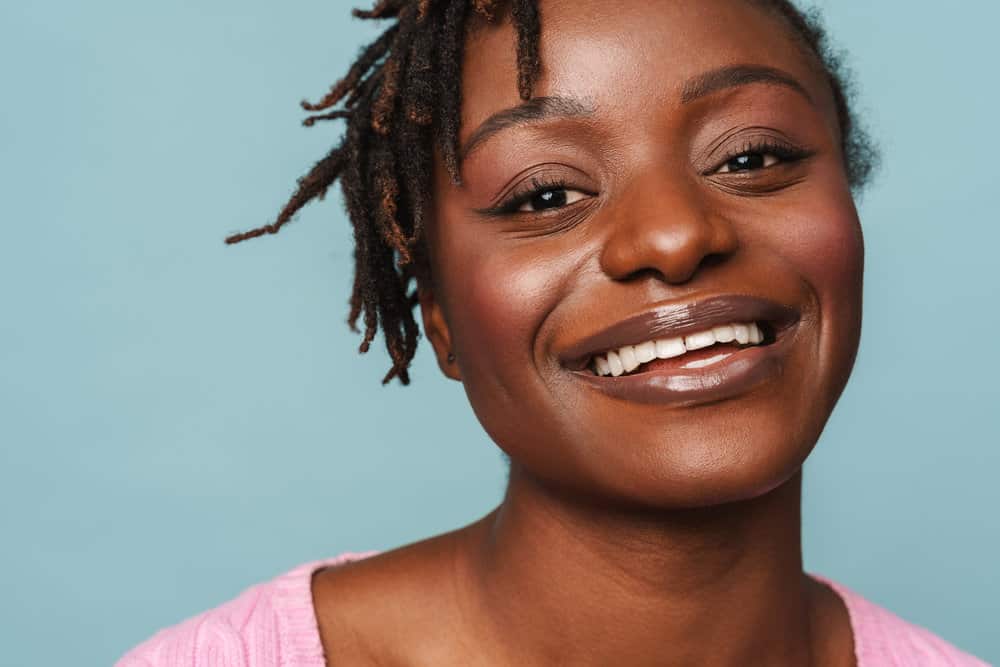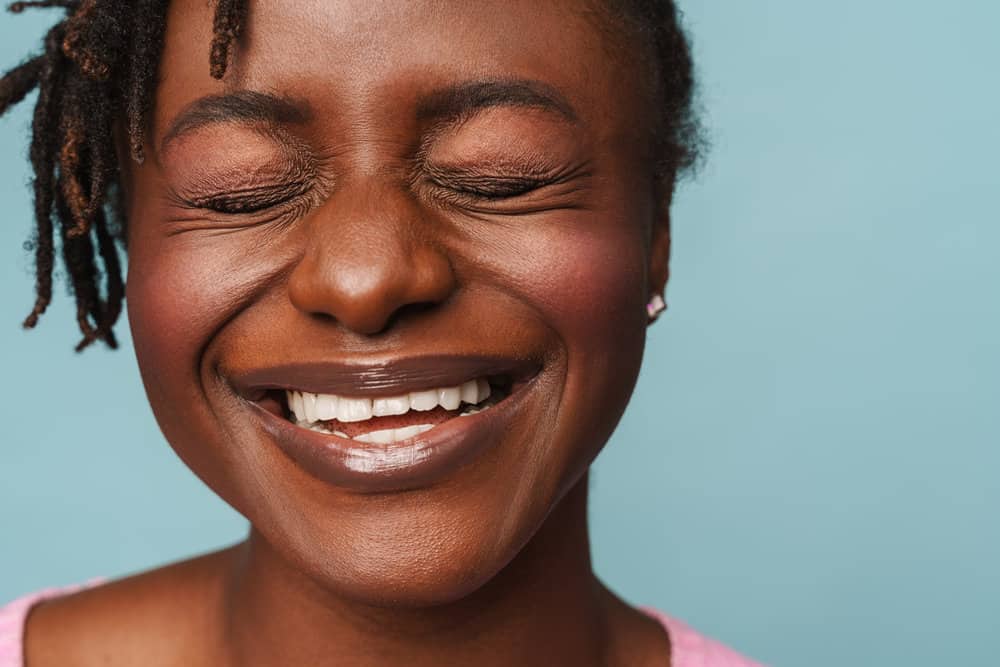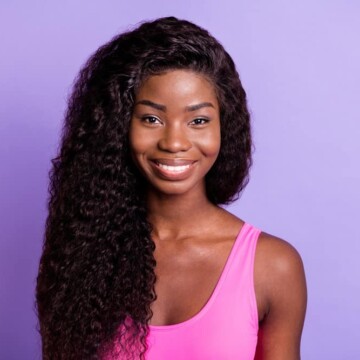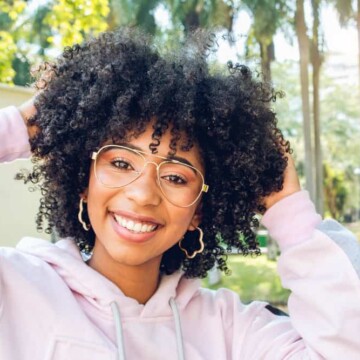
Have you recently decided to take the plunge and start your loc journey? Congrats! Starting locs on 4C hair can be an exciting and rewarding journey, but it’s essential to know the basics.
So in this article, we’ll give you the rundown on how to do starter locs on 4C hair. We’ll walk you through all the steps and answer all of your other loc-related questions. Are you excited to try something new? Let's get started!
Table of Contents
- 1 How to Do Starter Locs on 4C Hair: DIY Step-by-Step
- 2 How Long Does It Take for 4C Hair to Loc?
- 3 What Not to Do With Starter Locs
- 3.1 Don’t Overwash Your Locs
- 3.2 Deep Condition Your Starter Locs
- 3.3 Avoid Using Too Much Product
- 3.4 You Don’t Have to Care for Your Locs Alone
- 3.5 What Is the Best Way to Start Locs on 4C Hair?
- 3.6 Should I Lock My 4C Hair?
- 3.7 What Are the 4 Stages of Starter Locs?
- 3.8 What's the Best Way to Start Locs with Short Hair?
- 3.9 How Long Does It Take 4C Locs to Bud?
- 3.10 How Do You Maintain 4C Locs?
- 3.11 Can You Comb out 4C Locs?
- 3.12 Can You Do Butterfly Locs on 4C Hair?
- 3.13 Related Articles
How to Do Starter Locs on 4C Hair: DIY Step-by-Step
The good news is that you have a ton of options when it comes to locking 4C natural hair. Your ideal starter loc method ultimately depends on your personal preferences. Below, we’ll break down the pros and cons of each technique so you can choose the right one for you.

Comb Coiling Method
The comb coiling method is one of the most popular ways to start locs on 4C natural hair. Coils are sleek, tubular sections of hair that turn into locs when left alone. Unfortunately, comb coils are prone to unraveling, especially if you get them wet.
But the good news is that they’ll immediately give you the look and feel of locs. Just keep in mind that this is one of the most difficult loc-starting techniques to execute. For that reason, comb coil starter locs are usually left to professional locticians.
But if you want to DIY your locs, start with damp, freshly washed hair.
Separate a small, square section of hair at your nape, and comb through it with a fine-tooth comb. If you like, you can apply a bit of wax or gel to the section and insert the teeth of the comb about a half inch from your roots.
Then, twist the comb around to create a neat coil. Create another small section right next to your first one, and repeat the process until you’ve finished the rest of your hair.

Two Strand Twists
Perhaps the most straightforward way to start your locs is with two-strand twists. There's no braiding required! Ready to learn how to do it?
To start, part your hair into square-shaped sections. Split each section in two, and twist the half sections around each other to create a ropelike twist.
Then, move on to the next section and keep twisting your hair until you’re left with a head full of neat, two-strand twists. And that’s all there is to it!
The one downside to this method is that two-strand twists don’t have a lot of staying power. So in the days following your installation, a few may come unraveled. If that happens, just retwist them.

Box Braids
Box braids are another excellent way to begin your loc journey. Starting with box braids will leave you with similar-looking results as the two-strand twist method but with a few key differences.
Box braids have less overall shrinkage, which results in a smoother, more flexible loc. But unfortunately, it isn’t all good news. Starting locs with braids can leave each of your locs with a braided impression that can remain visible for years.
If you want to give box braid starter locs a try, part your hair into small, box-shaped sections and braid each one from root to the ends of your hair. To prevent the braid from unraveling, apply a little gel to the ends and coil them around your finger.

Free Form Locs
Starter locs don’t get any easier or low-maintenance than free-form locs. 4C hair has a uniquely kinky curly texture, which allows it to loc easily on its own. Simply refrain from brushing or combing your hair. Over time, your curls will cling to each other and form locs of different shapes and sizes.
With freeform locs, you're essentially letting your hair do its thing while you keep your hands out of your hair, no matter how unkempt your developing locs may look at times. It takes an enormous amount of self-control and patience to do this.
Note: If you're new to locs, the techniques described within this article will help you start dreads, dreadlocks, and locs, which are interchange in our nomenclature. Our goal is to help you determine which interlocking method works best for your locs journey.
How Long Does It Take for 4C Hair to Loc?
Unfortunately, there’s no set timeline for starting locs. Depending on your starting method, maintenance routine, and hair texture, the process may be faster or slower for some people. But you should know one thing about 4C hair - it locks up faster than every other hair type.
So, if you have 4C hair, you won't be waiting too long to get mature locs. On average, people have to wait a year or longer to get the locs they've been dreaming of.

Locs don't just pop up one day out of the blue, either. They develop slowly but surely over time. Here are the stages your locks much go through to become mature:
- Starter locs - This is the stage everyone's locs start in. Your locs will look the same as the method you started them with, whether it be two-strand twists, three-strand plaits, comb coils, etc.
- Budding locs - This is the stage where your locs start to look like they're doing something. You'll see lumps and bumps down the length of some or all of your locs. It can make styling your locs difficult for a while. Your locs will also look super thick in this stage.
- Teenage locs - This is the rebellious stage of the locking process. Teenage locs go every which way, don't hang right, and may be super frizzy at times.
- Mature locs - Mature locs have a uniform shape from roots to ends, they aren't overly frizzy, and they're bump-free in most cases. They also won't require a ton of maintenance to look and feel great. This is the stage where you'll feel like you've arrived!
- Rooted locs - This is a stage that's not always referenced - it's the stage where your locs have truly come into their own. They are growing like weeds, they aren't as thick as they were before, and they'll feel a little heavier.

What Not to Do With Starter Locs
Installing your starter locs is the start. You’ll also have to care for them, so they won't unravel and they'll stay perfectly defined. In this section, we’ll examine several things you should avoid when you have locs.
Don’t Overwash Your Locs
One of the worst things you can do to starter locs is wash them too frequently. Although cleansing your hair and scalp is necessary for your hair’s health, the moisture and manipulation can pull your locs apart and ruin your definition.
So try to strike a balance between washing your hair enough but not too frequently. For most people, this works out to be once or twice weekly.
Deep Condition Your Starter Locs
Conditioning treatments are non-negotiable for 4C hair, even when it's locked. Conditioners are packed with hydrating, fortifying, and nourishing ingredients that strengthen your hair from the inside out and promote hair health. Always condition your locs after rinsing your shampoo out.
Avoid Using Too Much Product
Gels, waxes, and other products are often used to slick down your edges or keep your retwisted roots from unraveling. Unfortunately, these products can leave behind a stubborn residue that coats and damages your locs.
So avoid overloading your locs with products, particularly ones that are waxy or sticky. Instead, use gentle, water-based products to nourish and strengthen your hair as needed.
You Don’t Have to Care for Your Locs Alone
With all the information available on the internet, more people than ever have taken their loc journey into their own hands. And while there’s nothing wrong with that, a visit to a loctician can save you time and heartache in the long run.
A qualified loctitian can spot problems early and correct them before they ruin your locs. They can also give you personalized advice and recommendations to ensure your locs thrive.
What Is the Best Way to Start Locs on 4C Hair?
The best way to start locs on 4C hair is by selecting a suitable method, such as comb coiling, two-strand twists, or box braids, depending on personal preferences and hair care needs. Each method offers distinct advantages and challenges, so researching and comparing these techniques will help you make an informed decision.
Should I Lock My 4C Hair?
Locking your hair is a personal decision based on your desired hairstyle, maintenance preferences, and comfort with the loc journey. Locs can be a beautiful, low-maintenance option for those who appreciate natural hairstyles and are willing to commit to the process. Researching the process, understanding the commitment, and consulting with a professional loctician can help you decide if locs are right for you.
What Are the 4 Stages of Starter Locs?
The four stages of starter locs are: 1) the initial starter locs stage, where locs resemble the method used to create them; 2) the budding locs phase, characterized by lumps and bumps that may make styling challenging; 3) the teenage locs stage, where locs appear rebellious, frizzy, and unruly; and 4) the mature locs stage, where locs have a uniform shape, require minimal maintenance, and feel great.
What's the Best Way to Start Locs with Short Hair?
The best way to start locs with short hair is based on your preference. For those with short hair, one method we like for starting locs is the freeform technique, which allows the hair to naturally lock on its own over time. By refraining from combing or brushing and allowing the hair to follow its natural course, locs will eventually form with minimal intervention.
Another option for starting locs with short hair is using the two-strand twist method, which can work well even with limited hair length. By parting the hair into small, square sections and twisting each pair of strands around each other, locs can be initiated without requiring extensive hair length.
We also like the sponge method, which involves rubbing a specially designed sponge with holes on damp hair in a circular motion to create small, coiled sections. This method is well-suited for shorter hair and can help kickstart the loc journey with minimal effort.
How Long Does It Take 4C Locs to Bud?
The time it takes for 4C locs to bud is typically shorter than other hair types, as the kinky texture allows for faster locking. On average, budding can begin in a few weeks to a few months, depending on the starting method, maintenance routine, and individual hair characteristics.
How Do You Maintain 4C Locs?
Maintaining 4C locs involves a balance of proper care and minimal manipulation. The maintenance process includes regular cleansing and deep conditioning, avoiding excessive product use, retwisting when necessary, and ensuring that the locs remain moisturized to maintain their health and appearance.
Can You Comb out 4C Locs?
Combing out 4C locs is possible, although it can be a time-consuming and labor-intensive process. With patience, a wide-tooth comb, and ample conditioning and detangling products, the locs can gradually be combed out to return the hair to its natural, curly state. The key is to work slowly and methodically, starting from the tips of your locs and working toward the roots of your hair to minimize hair breakage and loss.
Can You Do Butterfly Locs on 4C Hair?
Butterfly locs are a versatile and stylish option that can be done on 4C hair. With proper preparation and technique, butterfly locs can be achieved, creating a protective and fashionable hairstyle that those with type 4 natural hair can enjoy.
- How to Start Locs on Natural Hair
- Starter Locs Two Strand Twist
- Loc Stages Chart
- How to Sleep With Starter Locs
Starting dreadlocks can be a rewarding journey, with various methods available to initiate the process, such as comb coiling, two-strand twists, and box braids. The locs hair journey involves different loc stages, including starter locs, baby locs, and eventually mature locs, with each phase requiring different levels of care.
It's essential to deep condition your hair and be mindful of the products used to ensure healthy locs. For those with short hair, methods like the sponge technique can help kickstart the process.
Starting locs on 4C natural hair allows for a range of natural locs hairstyles and provides an opportunity to embrace the versatility of kinky hair. Whether you choose to start your locs journey at home or seek professional assistance, proper care and patience are crucial for success.
So, there you have it - everything you need to know about starting locs on 4C natural hair. We hope you found all the information you were looking for and that your loc journey turns out to be everything you want it to be. Good luck with locking your natural hair!




